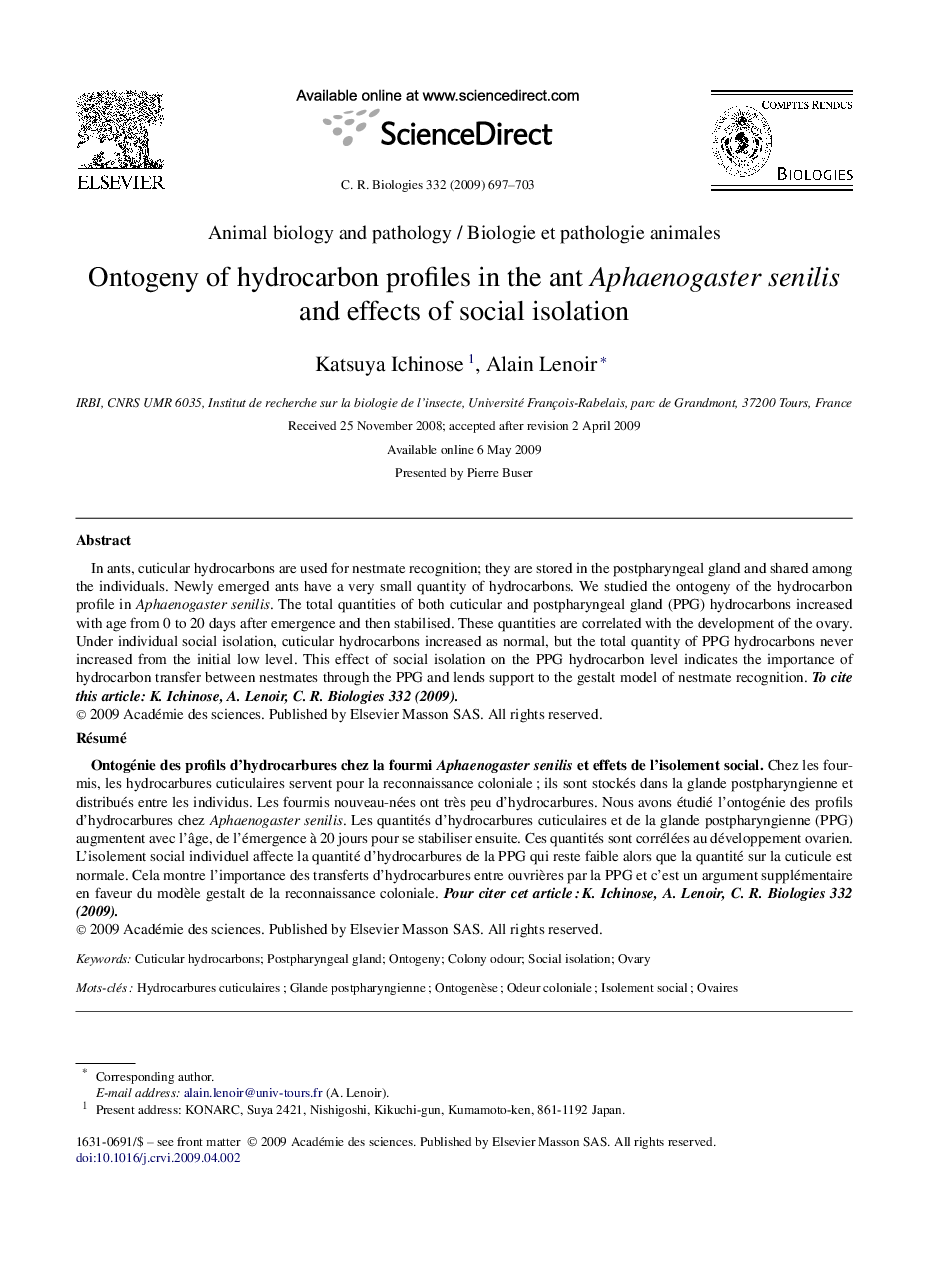| Article ID | Journal | Published Year | Pages | File Type |
|---|---|---|---|---|
| 2784554 | Comptes Rendus Biologies | 2009 | 7 Pages |
In ants, cuticular hydrocarbons are used for nestmate recognition; they are stored in the postpharyngeal gland and shared among the individuals. Newly emerged ants have a very small quantity of hydrocarbons. We studied the ontogeny of the hydrocarbon profile in Aphaenogaster senilis. The total quantities of both cuticular and postpharyngeal gland (PPG) hydrocarbons increased with age from 0 to 20 days after emergence and then stabilised. These quantities are correlated with the development of the ovary. Under individual social isolation, cuticular hydrocarbons increased as normal, but the total quantity of PPG hydrocarbons never increased from the initial low level. This effect of social isolation on the PPG hydrocarbon level indicates the importance of hydrocarbon transfer between nestmates through the PPG and lends support to the gestalt model of nestmate recognition. To cite this article: K. Ichinose, A. Lenoir, C. R. Biologies 332 (2009).
RésuméChez les fourmis, les hydrocarbures cuticulaires servent pour la reconnaissance coloniale ; ils sont stockés dans la glande postpharyngienne et distribués entre les individus. Les fourmis nouveau-nées ont très peu d'hydrocarbures. Nous avons étudié l'ontogénie des profils d'hydrocarbures chez Aphaenogaster senilis. Les quantités d'hydrocarbures cuticulaires et de la glande postpharyngienne (PPG) augmentent avec l'âge, de l'émergence à 20 jours pour se stabiliser ensuite. Ces quantités sont corrélées au développement ovarien. L'isolement social individuel affecte la quantité d'hydrocarbures de la PPG qui reste faible alors que la quantité sur la cuticule est normale. Cela montre l'importance des transferts d'hydrocarbures entre ouvrières par la PPG et c'est un argument supplémentaire en faveur du modèle gestalt de la reconnaissance coloniale. Pour citer cet article : K. Ichinose, A. Lenoir, C. R. Biologies 332 (2009).
